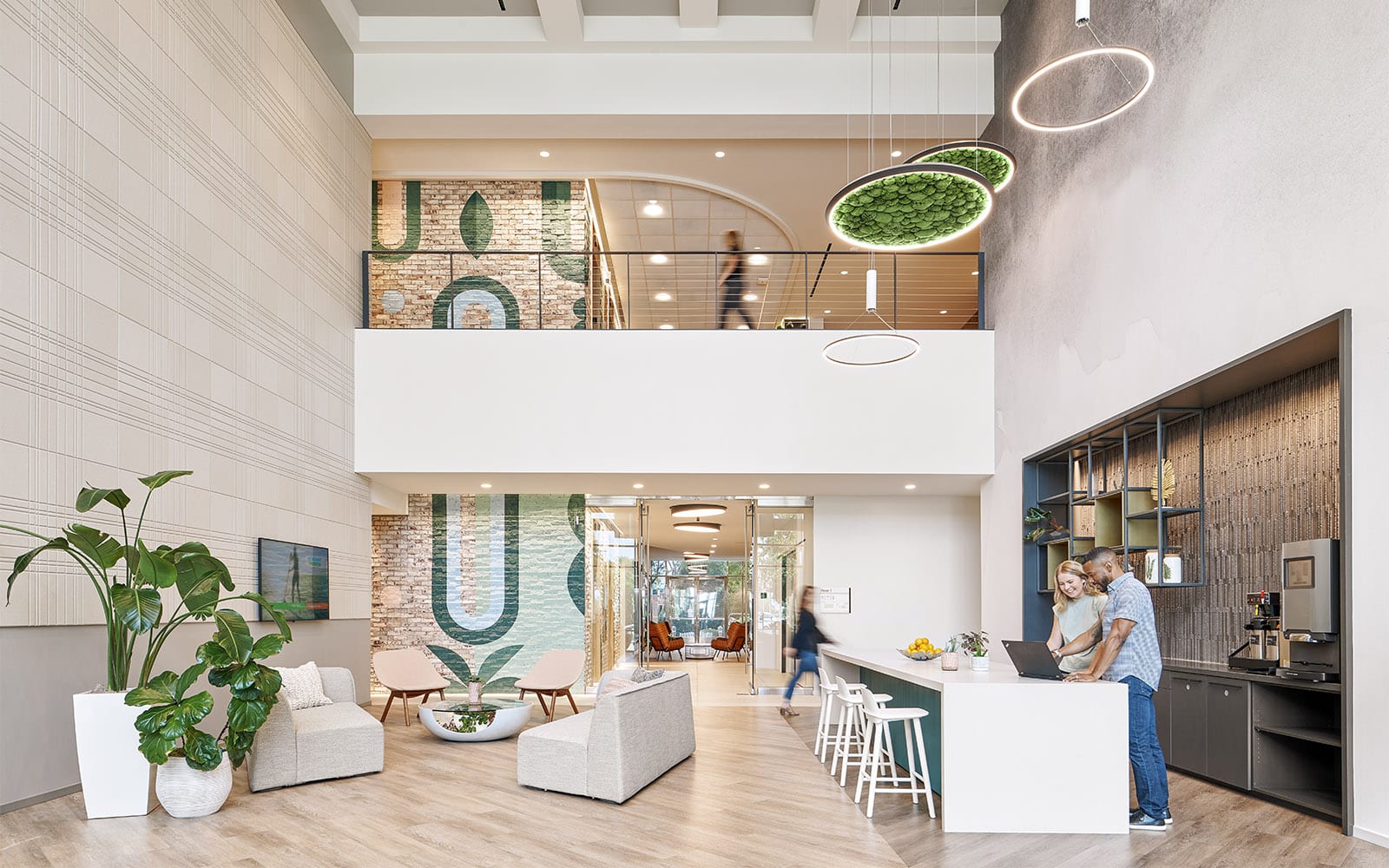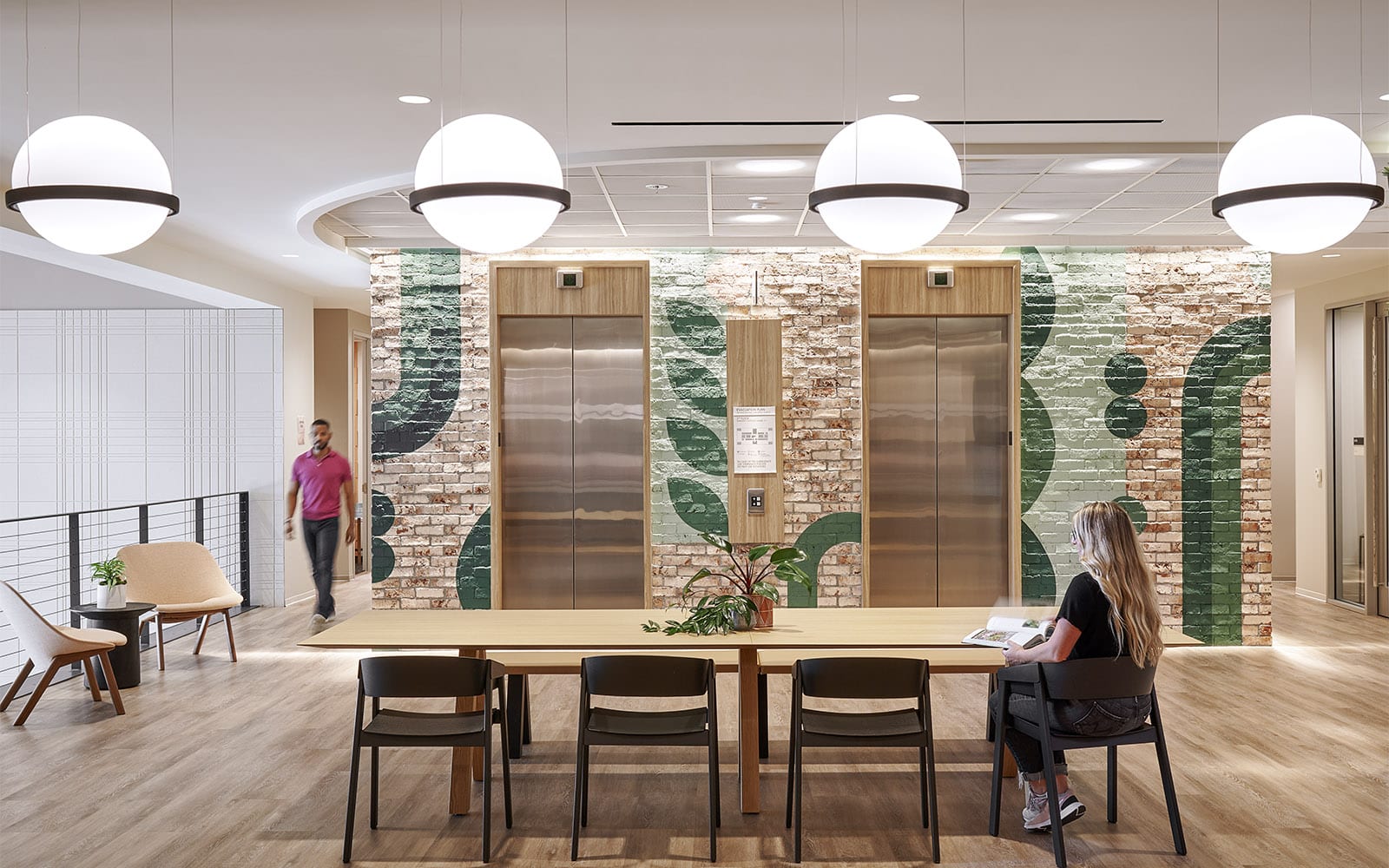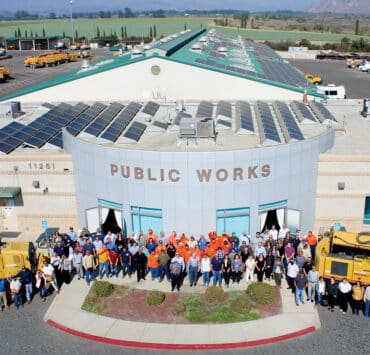|
Getting your Trinity Audio player ready...
|
We last spoke to ServiceNow’s Aoife Cahill just months into the COVID-19 pandemic—at a time when virtually nothing could be certain. But one ethos has remained consistent on the global design and planning lead’s team: to create spaces that people want to be in.
In navigating the post-pandemic, Cahill says her team’s approach to design hasn’t actually changed all that much. While that may come as a surprise to virtually anyone in the design and building space, it all connects back to that initial ethos. ServiceNow spaces have always been curated around the employee experience and what they need to do their best work.
“What has changed is how people use space,” the design lead explains. “After 30 days of working one particular way, that instinctually becomes how we do something. So, after people started coming back to the office, we saw a lot more people ducking into focus rooms or closed-door spaces because they were used to that at-home experience. Our job is to create spaces that can accommodate that style of working but also push people outside of their comfort zone just a little bit to reacclimate them to working collaboratively and collectively again.”

That’s an incredibly difficult balance to maintain, but Cahill is paving the way. How does she know it’s working? She ran into an employee recently who was driving into ServiceNow headquarters despite having moved to a satellite office closer to his home. The hour-long drive each way was still worth it to him because of the amenities, atmosphere, and people found at the headquarters.
“When I say that we strive to create spaces people want to be in, this is exactly what I’m talking about,” Cahill says. “Once you’re in the space, it’s so intuitive and inviting that it becomes the place where you do your best work.”
Plus, it’s about the small details just as much as the big ones. If employees want to work on sofas, they know an outlet is always nearby. If they enter a conference room, their computers will be recognized, and they’ll be able to connect to monitors with ease. The multitude of small conveniences all add up to something much larger.

Cahill says adaptation is key for these spaces. She wants to make sure that collaboration spaces, privacy booths, and desks are easily implementable or removable as employees get a better sense of what they want from a workspace. It’s not about having the exact solution now; it’s about creating spaces that can breathe and evolve as time moves on.
Cahill’s team is well ahead of the game when it comes to tracking utilization of space. At a recent conference, Cahill left a room full of tech visionaries astounded at the data her team has been able to collect and redistribute to ServiceNow employees about their own work habits.
“We have created dashboards where we use badge data to collect work habits, and we’ve given it all back to the employees,” Cahill explains. “Every employee can see their own utilization. Every manager can see their own team. Our people own it. We didn’t realize this was such a big deal until we left some very large and well-known companies with their jaws on the floor.”

They wanted to know how we were able to make this happen. Well, it’s their data,” she explains. “We’re not going to use it to make decisions if they can’t see it themselves. This just seemed like such a basic idea to me, but I guess we’re doing something unique.”
When used for decision-making, the data is aggregated anonymously. The design lead says these decisions can be made down to how many tea bags the company should have in the office. And, most importantly, employees can see their own work habits firsthand.
What’s more, Cahill says that since the pandemic, future-looking organizations have realized that the office experience can be a tool for both recruitment and retention. That’s why it’s so critical to listen to what employees want. ServiceNow is rolling out far more room for event space than she ever imagined would be requested but found that both employees and customers wanted to be on-site to come together.

And unlike so many organizations across industries, ServiceNow isn’t diminishing its square footage; it’s just reimagining it.
“So many companies are shedding so much space,” Cahill explains. “We’re not. We’re replanning. Our headcount just keeps growing and we adapt as we need to.”
Going forward, ServiceNow is employing an 80/20 rule for shared space compared with heads-down space. However, like all things, that may evolve. The secret isn’t to know the future of the employee experience. It’s to grow in a way that allows space to be utilized in a variety of ways: always adaptable, always welcoming, and designed to be where people want to be.
Meet Pivot. We create flexible, productive workplaces that support, inspire and empower. For more than 50 years, our clients have trusted us for everything from workplace strategy and design to procurement and services over the lifetime of your office. We specialize in helping clients across California design successful spaces to help their employees reach their maximum potential. Pivot is proud to partner with Aoife Cahill and ServiceNow to create unique environments. Learn more at pivotinteriors.com.
We are proud to be a partner of ServiceNow and we celebrate Aoife Cahill for her knowledge, professionalism, and her creativity in delivering modern and efficient environments for today’s workforce.
For over 40 years One Workplace has been proudly serving and supporting the Bay area and Northern California with our strategic partner Steelcase.
Over this time, we have been able to provide exciting and creatively designed workplace solutions for companies and industries of all types.


